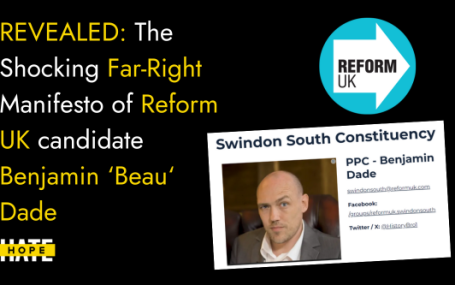HOPE not hate uses cookies to collect information and give you a more personalised experience on our site. You can find more information in our privacy policy. To agree to this, please click accept.
The net migration target has been the key goal of the UK government’s migration policy since 2010. It calculates the number of migrants arriving in the country against the number of British citizens and migrants emigrating from the UK, putting all migrants – from international students to those on work visa schemes- in the same bracket.
The aim is to bring down net migration from the hundreds of thousands to the tens of thousands – although the target has never actually been met. It currently stands at +273,000, nearly 200,000 over the rate set by the government.
The target has been a key factor in the campaigns for all parties in the general election and is likely to take centre stage again in the final stages of the contest. Quarterly net migration figures will be released on 25 May, just two weeks before the country goes to the polls. UKIP has argued for net migration to be bought down to zero, on a ‘one in one out’ scheme. The Lib Dems and Labour are fighting to scrap the target all together, while Theresa May has stated that it will remain a key part of her 2017 election messaging.
However, even within the Conservative party there has been resistance, with members of the party calling for May to remove student numbers from the target or scrap it all together. A legacy of Cameron’s government, the impossible magic number has at times seemed like an albatross around May’s neck. Its accuracy, practicality and public appeal are all massively disputed and two thirds of people don’t believe the target will be met by the next government.
There are very clearly public concerns about immigration, and about the rate at which immigration is occurring. Immigration has consistently been selected in IPSOS issues polls as one of, if not the, most important issue affecting the country. According to the British Social Attitudes survey, 77% of British people want to see immigration reduced- so the target may have some appeal with voters.
But when it comes to immigration the public is not well known for its numeracy. Even at times when economic needs for migration have been clear and rates of new arrivals have been steady, the public has demanded migrant numbers be reduced. Surveys conducted in the mid-1960s reveal that four out of five British people felt that “too many immigrants had been let into the country”. This at a time where Commonwealth migrants were arriving to fill gaps in the labour market, a major contributing factor to the rebuilding of the post-war urban London economy.
Looking at immigration through a numeric lens creates a landscape of public attitudes at odds with the reality. Asking about immigration always garners negative responses; that immigration is “too high”, there are “too many”, and we need to “control numbers”. When asked about specific groups of migrants, the reaction from the public is very different, as many applaud immigrants’ contribution to the economy and public services.
When asked by Universities UK who they thought ‘immigration’ referred to in government policy, 64% thought of low-skilled workers; just half of those asked thought highly skilled workers; and a mere quarter thought that foreign students classified as immigrants. While these categories in themselves are reductionist, they do show that public perceptions are not as one-dimensional as a numbers-only target.
The net migration target does not differentiate and the government continues to strive towards it with a series of hostile policies, cracking down on highly-skilled work visas and overseas students in poorer-quality universities, institutions which could benefit most from the additional funding these students bring. After all, the target is fairly arbitrary. Based on a travel and tourism survey from 1961, the target is created from only around 4-5,000 interviews with people identified as long-term international migrants at ports and airports, and it is prone to short-term fluctuations – which do not represent the true story of immigration in Britain.
As we leave the European Union, the politics of migration are in a state of flux. Rising concerns about the state of the economy and what kind of settlement we can achieve after Brexit have pushed immigration down on the agenda and opened opportunities for a more progressive approach. Dropping the target should be the first of these moves.

A Reform Party candidate fantasised about deporting “millions” of British citizens to “rid itself of the foreign plague we have been diseased with”. UPDATE: Reform…